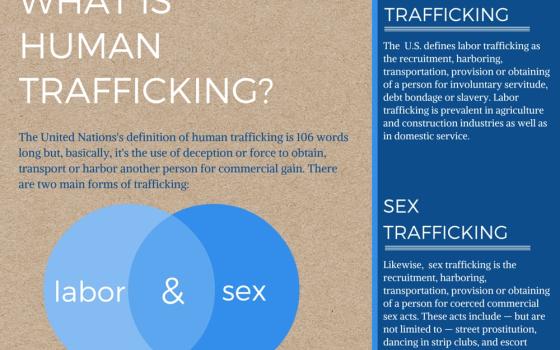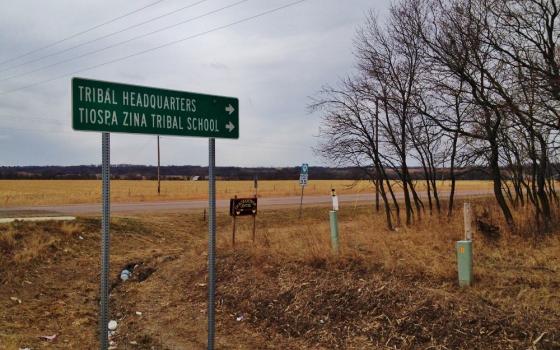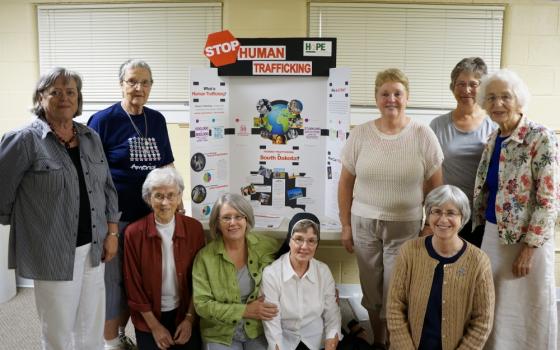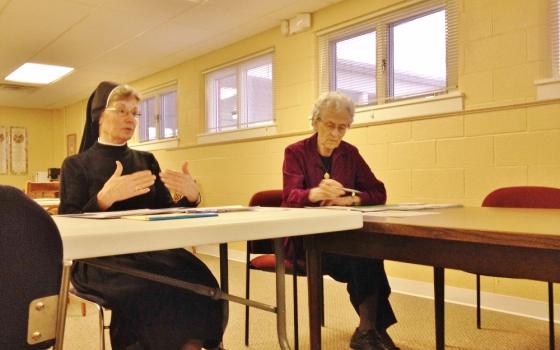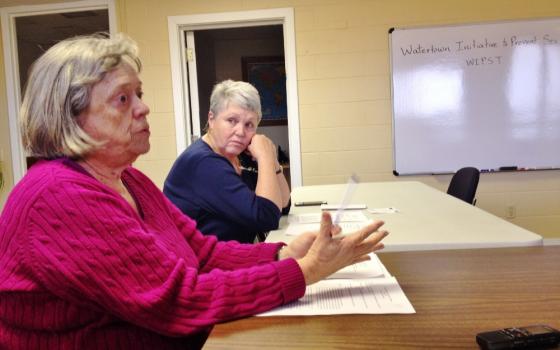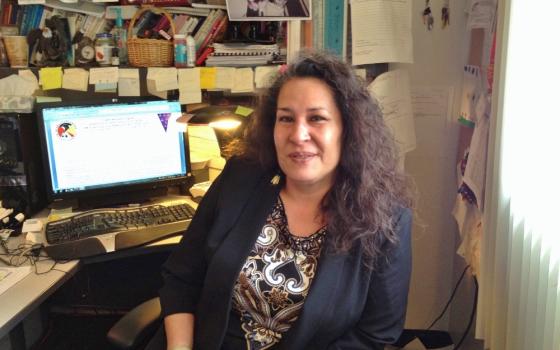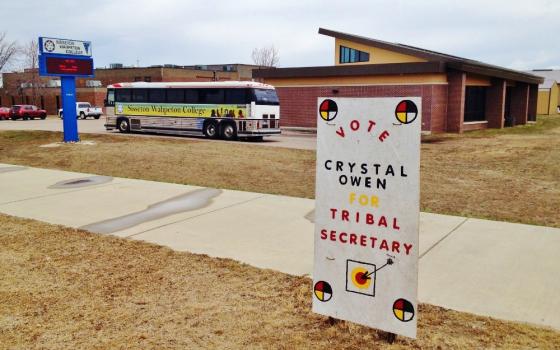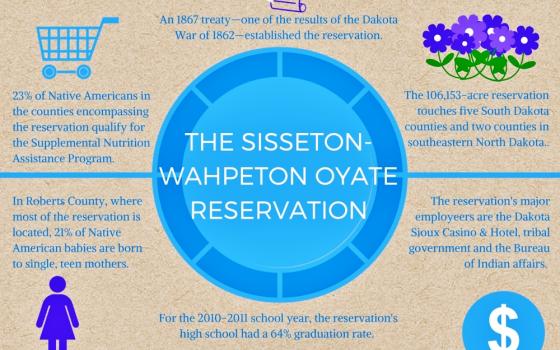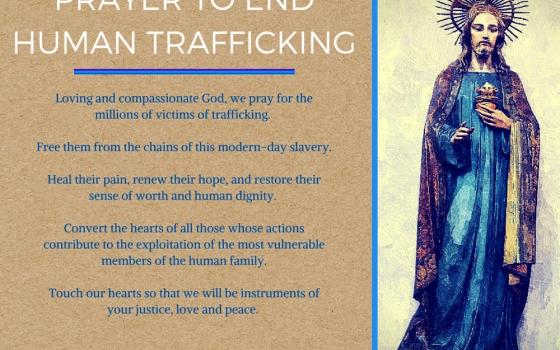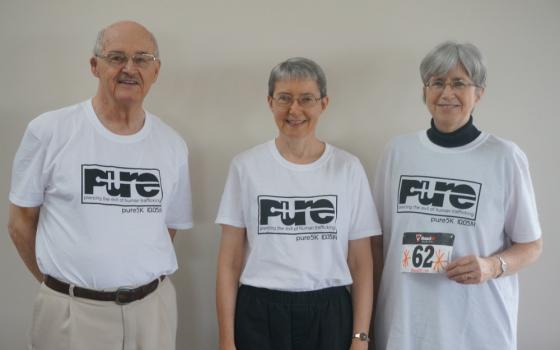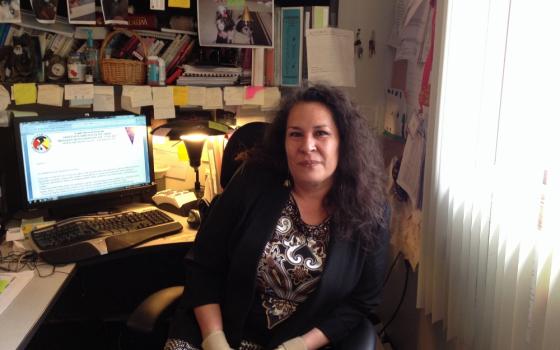Crystal was 13 years old when she met her pimp. Of course, she didn’t think of him as a pimp; he was her boyfriend, her savior, the man who doted on her and gave her the things her parents couldn’t or wouldn’t provide.
“You know how you’re a little girl and you dream of Prince Charming? Well, he was Prince Charming,” Crystal said from her home in Watertown, South Dakota. She asked that her real name not be used.
Crystal met this man through her dad’s substance abuse program. He was 10 years her senior. When they started dating, he got Crystal hooked on cocaine and the first time he sold her, it was to make good on a cocaine deal.
“He was out of coke and he asked me if I’d dance for his drug dealer,” she said. Crystal did it, and before long, she was also prostituting on the streets, dancing in clubs and working as an escort for politicians and professional athletes in order to feed the couple’s habit. Crystal hated what she was doing, but she said if she told her pimp no, he would beat her. Sometimes he would beat her even when she did what he asked. Crystal lived this way for four years — traveling across California, her home state, and Nevada — until her pimp went to prison on drug charges. She was 17.
Looking back, Crystal, now a 44-year-old mother of two, is convinced her pimp had everything planned when he first approached her, the vulnerable teenager from a troubled home.
“He offered me lemonade and brownies. He wanted to go out and date me, told me how pretty I was,” she said dryly. “He suckered me into it, I guess.”
Crystal’s story is depressingly common. The United Nations defines human trafficking as the recruitment, transfer, harboring or receipt for persons for an improper purpose — usually forced labor or sexual exploitation — and it happens all the time.
The numbers are hard to pin down but Polaris Project, a leading human trafficking advocacy group, estimates that 100,000 children are sold into sex slavery each year. And that’s just in the United States. The International Labor Union estimates that, globally, there are about 20.9 million sex and labor trafficking victims — 5.5 million of them children, and more than half of them female.
Today, from coast to coast, Catholic sisters in the U.S. do everything from staffing safe houses for survivors to teaching seminars on how to spot and report trafficking. Forty congregations of women religious belong to U.S Sisters Against Human Trafficking, a national network that provides education about trafficking, helps trafficking survivors get access to rehabilitative services and advocates for the policies and legislation that make human trafficking more difficult. But it wasn’t always that way. It actually took a long time for human trafficking, particularly sex trafficking, to become a mainstream social justice cause that anyone talked about.
A winding path to a holistic approach
After all, there has always been human trafficking in the United States. In fact, the first Jamestown tobacco fields were toiled by slaves trafficked from western Africa, meaning that trafficking here actually predates the United States as the United States. Still, the nation’s history of dealing with trafficking is somewhat convoluted, with efforts to thwart the problem often obfuscated by the overlapping and sometimes competing issues of race, sex and politics.
For instance, the first anti-trafficking legislation in the U.S., the Mann Act of 1910 — also known the White Slave Traffic Act, it should be noted — wasn’t so much about protecting the vulnerable as it was about sheltering working-class white women from perceived sexual impropriety. The act built upon the 19th-century British movement that coined the term “white slavery,” and that, similarly, sought to protect white women from prostitution, forced or otherwise. When second-wave feminists in the U.S. revived sex trafficking as a cause célèbre in the 1970s, they too borrowed from this legacy, focusing on misogyny and sex markets but sometimes butting heads with sex workers who didn’t consider themselves victims.
It wasn’t until 2000 — 90 years after the Mann Act —that feminist groups nudged the United States into enacting the Trafficking Victims Protection Act, the piece of legislation now heralded as the substantive core of all federal anti-trafficking efforts, thanks to its holistic approach to human trafficking.
For starters, instead of simply policing prostitution and sex, the act established a number of paths to rehabilitation for true trafficking survivors, including financial restitution and special visas for those trafficked into the U.S. from abroad. The act also created a State Department office and a task force exclusively focused on human trafficking. The former publishes the annual Trafficking In Persons report that serves as the U.S. government’s primary diplomatic tool in international anti-trafficking efforts (for better or for worse).
Subsequent reauthorizations of the Trafficking Victims Protection Act in 2005, 2008 and 2013 expanded protections for survivors and strengthened anti-trafficking collaborations between federal and local law enforcement operations. And as momentum behind the anti-trafficking movement in the U.S. grew, it also began to attract more and more adherents, particularly among faith groups.
In 2011, the so-called #TomatoRabbis of the Jewish human rights group T’ruah paired up with the Coalition of Immokalee Workers to address labor trafficking on U.S. farms. The following year, more than 40,000 evangelical college students donated a reported $3 million to the anti-sex trafficking cause during a conference hosted by Georgia megachurch pastor Louie Giglio.
But one of the very first faith groups to take on human trafficking was Catholic sisters.
In 2001, just a year after both the Trafficking Victims Protection Act and a new United Nations protocol brought human trafficking to the forefront of social justice issues, the International Union of Superiors General approved a declaration committing Catholic sisters around the world to solidarity in addressing human trafficking at “every level.” In 2009, the group created Talitha Kum, a global anti-trafficking network of women religious. Three years after that, the Leadership Conference of Women Religious adopted a resolution to end human trafficking, citing the fact that many of the conference’s member congregations were already involved in anti-trafficking ministries.
The Sisters of the Divine Savior were early adopters of the anti-trafficking cause, even among women religious. The U.S. province made it one of their two primary issues in 2001 (the other being girls’ education), and by 2002, Divine Savior Srs. Jean Schafer and Sheila Novak had relocated from the Midwest to California in order to scout out what ministries would be of most service in a state noted for its high rates of human trafficking.
Schafer and Novak ultimately opened a rehabilitation house for human trafficking survivors in the San Diego area where they still live. The duo can house five women at a time, and they craft rehabilitation processes that match the needs of each individual. Some women start going to school, while others get jobs. Novak and Schafer help them get to meetings with their lawyers and social workers, and they help them to learn English, if necessary. (They say about half of the women they’ve housed throughout the years have been United States citizens.)
It’s from this house that Schafer edits the widely read Stop Trafficking Newsletter, which is co-sponsored by 74 congregations of women religious nationwide. It’s also where she and Novak keep a pulse on trafficking news, both in California and across the U.S.
A lot has changed since they started doing this work, Novak told Global Sisters Report. The Internet has been a big game changer, making the trafficking of human beings both easier to do and harder to track. At the same time, she said, people these days are better educated when it comes to human trafficking. “At the beginning, and I’m talking back in the early 2000s, there was very little knowledge — even among people you would expect to have knowledge, like judges and the police,” she said.
But today, thanks to training grants for police departments, not to mention the advocacy and education ministries of women religious, law enforcement agencies across the country are getting up to speed on human trafficking. Because, despite a common misconception that human trafficking — if it happens at all — doesn’t happen in the U.S., it does happen here.
Even in Watertown, South Dakota — a city with a population of less than 22,000 — where trafficking survivor Crystal now lives, human trafficking is a problem. But like in many communities, Watertown also has a congregation of women religious (Benedictines in this case), who are on a mission to make sure every South Dakotan they meet knows human trafficking is happening in their backyard.
Benedictines launch community effort
Among the Watertown Benedictine sisters this spring, there was a lot of talk about putting up a billboard on Interstate 29. The congregation had recently applied for a Catholic Health Initiatives violence prevention grant and, if they got it, the billboard was one of the first things they planned to do.
Running 746 miles north-south from Kansas City, Missouri, to the Canadian border at Manitoba, cuts right through Watertown, I-29 — like most major highways in the United States — is an active trafficking conduit. In fact, the most remarkable thing about I-29 when it comes to human trafficking activity may be that it isn’t remarkable at all; according to a 2013 report from the Maryland-based Abell Foundation, an estimated 70 percent of sex trafficking in the U.S. depends upon the use of the interstate highway system.
In June, the Benedictines were told they’d received their grant, and they’re already in discussions to get a billboard up in time for next summer’s Sturgis motorcycle rally and pheasant hunting season — times when the sisters say there’s an uptick in sex trafficking in South Dakota. The billboard will be aimed primarily at truckers, providing them with tips on how to spot sex trafficking at truck stops and a hotline number to call when and if they do.
“I don’t know if we’re overly ambitious, but we’re saying our service area is within a radius of 100 miles of Watertown,” said Sr. Teresa Ann Wolf, the spry, soft-spoken director of the Watertown Benedictine Multicultural Center and member of HOPE, a local initiative to end human trafficking.
The Benedictines started HOPE three years ago after their prioress, Sr. Marlene Minnaert, came back from the LCWR annual assembly at which the resolution to address trafficking was approved. But from the start, Wolf says, the sisters did not want HOPE to be "the nun project.”
“We wanted this to be a community effort,” she said, “and we’ve been very happy to be able to do that from the very beginning — to get other churches involved, social service agencies, the school, ministerial associations — those kinds of people.”
Education is HOPE’s primary focus, hence the desire for the billboard. Members talk at middle schools, churches, to Rotary clubs, and to Girl Scout troops. They travel up and down I-29 into North Dakota, across South Dakota and even over into Minnesota — basically anywhere their presence requested — teaching people about sex trafficking.
“When we tell people about the problem,” said Colleen Lindberg, another HOPE member, “they say, ‘No, no, no, no — that’s in other countries.' People want to think it’s over in Thailand.”
But, in fact, 14 men in South Dakota have been federally indicted for sex trafficking in the last two years. And Watertown Detective Nic Ahmann told Global Sisters Report that just in the first few months of this year, the South Dakota Internet Crimes Against Children task force had arrested six men for soliciting sex from children under the age of 16.
South Dakota also has nine American Indian reservations, one — the Lake Traverse Reservation of the Sisseton-Wahpeton Oyate — is just an hour north of Watertown along I-29, a point of interest to HOPE, given that Native American women have become increasingly susceptible to sex trafficking in recent years. It’s Sr. Theresa Wolf’s dream that the HOPE network will soon expand widely enough to include this reservation, and she’s already been hard at work making connections in the area.
“We want to invite the churches in Sisseton [South Dakota] into our network so we get more participation from Native Americans,” she said.
The boarding school effect
About 10,500 Sisseton-Wahpeton Sioux (Oyate) live on the reservation and on nearby protected land. Like the other reservations dotted throughout the western half of the country, the Lake Traverse Reservation is plagued with poverty and substance abuse — the lasting effects of centuries of systematic oppression of Native peoples in the United States.
Teresa White, an addiction counselor for youth on the Sisseton reservation, says trauma runs deep in Indian country. Consider, she said, the fact that generations of Native children — from the 1870s until the 1980s — were sent to abusive boarding schools. What kind of parents could those children grow up to be?
“If a little kid fell down, bumped their knee and started crying, what would you do? Say, ‘Oh come here, baby. Let me kiss your boo-boo. Do you want a Band-Aid?’” she said. “Back then, it was, ‘Get up. Get in line. Go.’ They didn’t get a caress. They didn’t get love. They didn’t learn that part of parenting. So when they grew up and had babies, they didn’t pass it to their children. They couldn’t pass it because it was never put in.”
White, a fiery woman known for her devotion to her clients and her tribe, grew up on the Sisseton-Wahpeton Oyate reservation. She says this terse relationship style common among Native people is called the boarding school era effect, and even she — a counselor with years of study in historical trauma and its effects — isn’t immune.
“I was married for 16 years, and I only told my husband — I think — twice that I loved him,” she said. “And that’s because he never asked me. I never told my children growing up. That didn’t mean I didn’t love them. It was because it wasn’t in my generation.”
The boarding school effect has played its part in the maelstrom of issues that make Native girls particularly vulnerable targets for sex traffickers: In addition to their being poor and therefore able to be enticed by money and gifts, their parents often don’t know what they’re up to or who they are talking to. Many have cognitive delays as a result of Fetal Alcohol Syndrome. And then there’s the sexual abuse.
Native young women and sex trafficking
In an April webinar on human trafficking hosted by the National Indigenous Women’s Resource Center, Lisa Brunner, the organization’s programs specialist, said Native women are two and a half times more likely than women of other races to be the victims of sexual assault. On the Sisseton reservation, White said that for every 10 girls who walk into her office, nine have been raped or sexually molested.
“It sounds rough to put it this way,” White said, “but these young Indian girls are fresh meat.”
Fresh meat. That is, Native girls — with all of their vulnerabilities — are a new, untapped demographic for the sex traffickers who need a constant supply of young girls in order to meet market demands.
Native American sociologist and trafficking survivor Alexandra “Sandi” Pierce says that for Native girls in the Great Plains and the upper Midwest, most sex trafficking happens at private parties arranged by traffickers.
Sometimes girls are gang-raped once they arrive at these private parties, and then video of the assault is used to blackmail them into continued service, Pierce says. In other instances, girls agree to provide sex at parties in exchange for money or gifts. In both cases, the girls usually consider the trafficker/party host to be their boyfriend, and Pierce says an alternating pattern of violence and kindness is used to keep girls off base and focused on pleasing “their man.”
Teresa White is all too familiar with these private parties. Trafficked Sisseton-Wahpeton Sioux girls, she said, are sold at parties hosted for migrants working at farms near the reservation. The girls make $100 to work the party, and then their “boyfriends” ask them to recruit their friends.
Benedictine Sr. Teresa Ann Wolf has been to the farms, travelling from Watertown to try to explain, in Spanish, the U.S. consent laws to migrant workers who — incidentally — may have been trafficked for labor themselves.
She says some of the farmers see no problem with having sex with minors. “One man was involved with a 14-year-old girl,” she said. “He said, ‘She told me she was 16.’ I said, ‘That’s still a minor in the United States.’”
Wolf explained that many of the migrant farmers have families back home, but it’s too dangerous for their families to travel to South Dakota with them. So the men are alone. The only real socialization they have is at bars and at these parties hosted by sex traffickers. In many cases, the farmers don’t know who the girls are, how old they are or how they got there.
Wolf, however, doesn’t see that as a much of an excuse.
“I’ve said, ‘You know better than this.’ But they say, ‘These are the women who are available to us.’”
Building trust and eradicating root causes
Despite the fact that these parties are far from secret, it is difficult for law enforcement to prosecute the men who participate in them. Really, as police officers from New York City to Watertown to San Diego will tell you, all forms of human trafficking are difficult to prosecute.
Nic Ahmann, the Watertown detective who’s on the South Dakota Internet Crimes Against Children task force, said human trafficking is the type of crime that mandates intentionality from law enforcement agencies because it’s so underground. Agencies have to make a conscious decision to go after trafficking, he said, and then they have to “dive completely into it.” But that level of dedication takes lots of time, lots of training and lots of resources. And even then, that doesn’t mean law enforcement efforts will be fruitful.
Ahmann said sex traffickers are a lot like drug dealers in that they work in rings. You can arrest one trafficker, but another one will pop up to take his place. Trafficking victims have also suffered such intense emotional manipulation that, assuming they even know his real name, it’s often impossible to get them to turn over their boyfriend/pimp to the police.
“In Watertown, in the last year we’ve made two prostitution arrests,” Ahmann said. “The difficulty is, we have to make that victim — that person who is a suspect, but really is a victim — we have to make them trust law enforcement enough to be able to tell us if someone is forcing them to do this. . . . We have the resources available in Watertown, we just have to do our job well enough to make them feel comfortable to open up to us.”
From the law enforcement side of things, addressing human trafficking is an almost unfairly uphill battle. That’s why women like Teresa White on the Sisseton-Wahpeton Oyate reservation and the Watertown Benedictines are trying to get at human trafficking by eradicating root causes.
White wants jobs on Indian reservations. Her thinking is that companies should get tax breaks for building businesses on reservations. The new jobs resulting from these businesses would help Native Americans lift themselves out of poverty which, among other things, would make it less likely that Native girls would need or want to sell sex for a cell phone and a clean pair of jeans. “Write the president on that,” White said.
In Watertown, the Benedictine sisters and HOPE take every opportunity they find to publicly call out human trafficking for what it is — trusting that if enough people understand what the crime looks like and how it works, fewer will be vulnerable to traffickers and their tricks. “It’s a global reality,” Sr. Theresa Ann Wolf said. “It’s in the United States, it’s in South Dakota. What, then, can you do to stop it?”
Tackling a ‘horrific and widespread’ crime
In the nation’s capital, North Dakota’s U.S. Sen. Heidi Heitkamp is also going after the root causes of sex trafficking. Her primary focus is on getting improved resources for runaway minors in order to keep them off the street, away from traffickers and away from the need to sell sex to survive.
“It’s not Laura Ingalls Wilder bounding through the prairie that gets snatched up,” Heitkamp said. “These kids tend to be troubled. These kids tend to have been placed in foster care, to have been in the system for a lot of years. I think doing family interventions earlier and trying to prevent runaways is also another strategy that needs to be pursued.”
Before she was a United States senator, Heitkamp was North Dakota’s attorney general, so she’s well-versed in the trafficking problems along I-29 and among Native populations. All you have to do is replace “South Dakotan dairy farms” with “North Dakotan oil fields,” and you have a pretty clear picture of how and where Native girls are being sold for sex along this stretch of I-29.
As attorney general, Heitkamp worked to change the way trafficking victims were treated in the legal system, and in her first two years in Congress, she’s done more of the same — putting her political weight behind four bills explicitly aimed preventing trafficking or protecting trafficking victims, in addition to introducing and supporting other bills that address tangential issues like tax credits for foster care parents and better resources for Native American communities.
In June, the national network of Catholic sisters were at the ready to advocate, if necessary, for Heitkamp’s latest bill, a bipartisan plan to train health care providers in recognizing when their patients might be victims of human trafficking and how to report it. So far the bill hasn’t needed help from the sisters; it’s currently with the Senate Committee on Health, Education, Labor and Pensions but, in a statement released on her website, Heitkamp urged for its passing, emphasizing that it could potentially help thousands of victims.
“Human trafficking is modern day slavery plain and simple,” she said, “and is one of the most horrific and widespread crimes in our nation. Health providers are often some of the only people victims may see while they are in captivity, but too often nurses and doctors aren’t sure how to identify or help victims. But we can change that.”
Heitkamp told Global Sisters Report she would also like to see harsher penalties for the people who buy children for sex, noting that when perpetrators of domestic violence began suffering real legal and social consequences, a lot of behavior did begin to change. No one wants to be known publicly as an abuser, Heitkamp said, which is why she’s a big believer that deterrents and intervention on the demand-side of the market can help staunch human trafficking. Heitkamp’s not alone in that.
Working against trafficking — and the unknown
Beginning with a national campaign in 2012, there has been a concerted effort by law enforcement agencies to focus on johns — the men who buy sex — rather than the women and girls being sold. Operation: Buyer Beware, the 2012 campaign, was an 11-state sweep of johns, led by police and sheriffs’ departments, that resulted in 268 arrests and 489 charges in 10 days. Since then, many local campaigns and even additional national campaigns have at least begun to shift law enforcement’s focus in what many advocates would call the right direction — limited as their ability may be to deal with the murky, nebulous world of human trafficking.
“To me, demand is key. This is all about supply and demand,” said Marist Missionary Sr. Judith Sheridan. Sheridan, together with fellow Marist Missionary Sr. Joan Bernich, runs Mary’s Guest House in Chula Vista, California, a rehabilitation house established in 2005 for survivors of sex and labor trafficking. The purpose of the house is to help trafficked women move forward into productive lives and, and as Sheridan puts it, to “follow their dreams.”
Like Sheridan and Bernich in Chula Vista, Divine Savior Sr. Sheila Novak in the San Diego-area is excited about increased pressure on the demand-side of sex trafficking.
In addition to running their rehabilitation house and putting together their ubiquitous Stop Trafficking newsletter (every member in attendance at the monthly HOPE meeting in Watertown this April got a copy) Novak and Sr. Jean Schafer are part of a coalition of about 20 women religious in Southern California that meets monthly to discuss human trafficking. The coalition also puts on an annual symposium; the theme of the 2016 symposium will be addressing demand.
“You can rescue victims,” Novak said, “but until you address the people who are purchasing sex, until you address the underlying cause, you’re just going to perpetuate victims of human trafficking.”
The thing about anti-trafficking work, Novak says, is that for all the legislation and ministries and education programs you come up with, you can never truly know if you’ve been successful.
“I’m hoping the number of traffic victims will decrease, however, the statistics are very misleading because we know that victims of human trafficking don’t always claim to be traffic victims,” Novak said. “And then to follow them, and to say that they have — really rebuilt their lives? I think this is one of those things you have to take on faith,” adding that her current ministry is a lot like teaching, which as for many sisters, was her first ministry.
“I can give tests to see that my students have mastered a certain amount of material,” Novak continued, “but how do I know if my teaching has really affected them? Made a difference in their lives? I don’t know. And I think with trafficking, we don’t really know. But we believe this is a terrible thing to be done to human beings, and as we go along, we come up with new ways to address it, hoping it will make a difference. And I think that’s all we can do.”
[Dawn Cherie Araujo is Global Sisters Report staff writer, based in Kansas City, Missouri.She traveled to Watertown, South Dakota, to research material and conduct interviews for this story. Follow her on Twitter @dawn_cherie]

